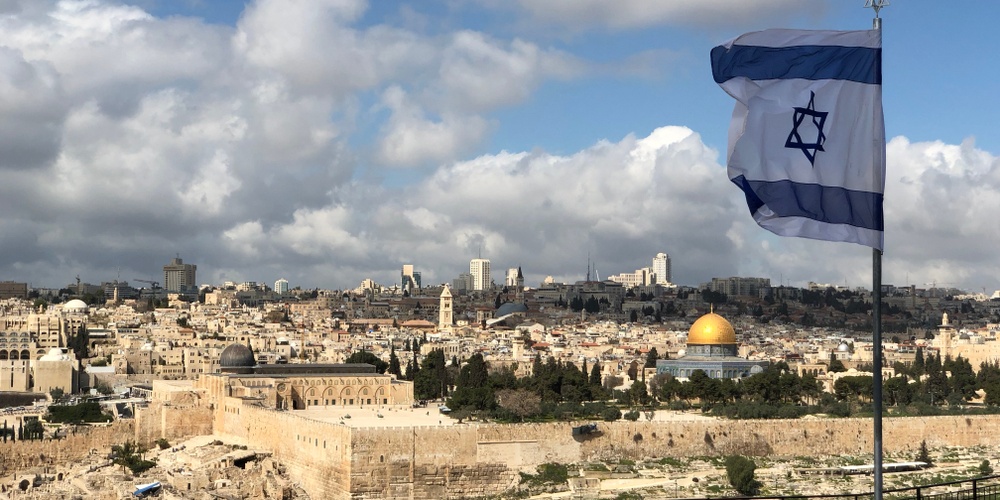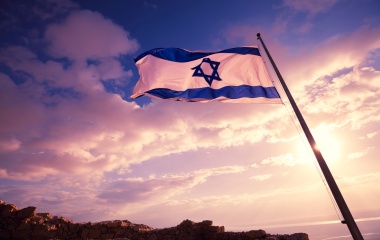
The period of sefirat haomer has undergone great transformation over the ages. In the Torah itself, it links the korban haomer brought on the second day of Pesach with the korban shtei halechem brought on Shavuot, thereby connecting the barley and wheat harvests. Each day of the grain harvest season was an opportunity to express gratitude to our Creator.
Sometime during the period of Chazal, the focus of the sefirat haomer shifted to a counting from the physical freedom of Pesach to our receiving the Torah on Shavuot. The count reflected our growth from the depths of impurity to revelation at Sinai. After the crushing defeat of the Bar-Kochba revolt and the horrible Hadrianic persecutions, the sefira period was no longer a time of great joy and anticipation but one steeped in tragedy and mourning. Whereas Sinai was considered the wedding between G-d and the Jewish people, during this “new” sefira period, we were no longer allowed to marry. This mourning was intensified during the Crusades, as the communities on the Rhineland were decimated during this time.
This is how it stood until the 20th century, when in 30 short years, four new “holidays” were added to the Jewish calendar during the period of sefirat haomer: Yom Hashoah, Yom Hazikaron, Yom Haatzmaut and Yom Yerushalayim.
While these modern holidays commemorate the terrible and glorious history of the 20th century, it seems that our new holidays are in many ways modern—and hence, more powerful—recreations of our ancient holidays.
We need not explain that Yom Hashoah is the updated version of Tisha B’Av. So terrible was the Holocaust that I am not certain we can compare even Tisha B’Av to it. It is worth noting that the kinnah “Mi yeiten roshi mayim”, an elegy to those killed by the Crusaders, states that the tragedy that befell the communities of Speyers, Worms and Mainz was equal to that of the destruction of the Temple. Historians have noted that approximately 3,000 Jews were killed during the Crusades. If this equalled the destruction of the Temple, there are no words to describe the Holocaust.
Tisha B’Av actually has elements of comfort built into the day: it is referred to as a moed, a holiday, and tachanun is not said. While there was great death and destruction, our Sages assert that G-d took out most of his anger on the sticks and stones of the Temple, sparing the majority of the people (see Rashi, Kiddushin 31b, s.v. istaya). Tisha B’Av is seen as the birthday of the Messiah and as the day progresses, the mourning practices lessen. Alas, there were no sticks and stones to bear the brunt of the enemy during the Holocaust, and one-third of our people were wiped out in the most horrific of circumstances.
Perhaps there is no sadder day in Israel than Yom Hazikaron, the day we pay homage to those who fell so that there can be a Jewish State to protect and defend Jews everywhere. The losses are fresher, and in a limited sense, more depressing—is there no end to the desire of our enemies to kill as many Jews as they can?
Yet this is not the only Yom Hazikaron we observe during the year. On Yom Hazikaron on the first of Tishrei, we stand in prayer, beseeching G-d to inscribe us in the Book of Life, to remember us in a most positive way. We ask G-d to remember us, while it is we who remember the fallen on the Yom Hazikaron of the month of Iyyar. Yet at the same time, on Yom Hazikaron of Tishrei, it is we who must remember where we come from and where we are headed. We must remember and uphold our covenant with G-d. And on Yom Hazikaron of Iyyar, we ask G-d to remember the sacrifices and dedication of our people, the many ways the State of Israel has been a light unto the nations.
The parallels between Pesach and Yom Haatzmaut are also quite obvious. Who could believe that a band of slaves could bring the most powerful nation of the world to its knees and leave with the populace showering them with gifts? Who could believe that after 2,000 years, a dispersed and despised people would return to their ancestral home? Who could imagine that a language for millennia used for prayer and study only would be the mother tongue of millions? And who could imagine that this tiny nation would be a leader in so many fields? If the generation that left Egypt was destined to die in the desert, the generation that founded modern Israel made the desert bloom.
I would like to suggest that Yom Yerushalayim is, in many ways, a modern-day Purim. Then and now, our enemies announced their intention to wipe out the Jewish nation. There was fear and trepidation, and the Jewish people feared another Holocaust, so soon after the destruction of the Temple and that of European Jewry. And yet miraculously, whether in one day or six, the Jewish people were saved and redemption appeared near.
Our Sages note that we do not say Hallel on Purim as, when the story ended, “we were still slaves to Achashverosh” (Megillah 14a). The Megillah ends with the imposition of taxes on the people and an allusion to the fact that Mordechai had many detractors. While there was salvation, there was no redemption. It is not enough to win the battle; sometimes the aura of victory is not quite what one had envisioned.
Today we celebrate the 71st “birthday” of the modern State of Israel. Seventy-one is the number of people in the Sanhedrin, the Supreme Court of the Jewish people. This is the court that deals with issues of national importance: war and peace, borders, overseeing the justice system and being responsible for the dissemination of Torah. It is the Sanhedrin that has the power to issue new decrees and ordinances and to repeal older ones. The Sanhedrin is the symbol and representative of the Jewish people and thus, can only be established in the Land of Israel.
In the 16th century, Rav Yosef Karo, living in Tzfat, was one of seven luminaries to receive the newly revived original semicha in an aborted attempt to recreate a Sanhedrin. And with the creation of the State, a second attempt, spearheaded by Rav Yehuda Leib Maimon, was also unsuccessful.
The re-establishment of a Sanhedrin can only occur, the Rambam rules, when “all the scholars in the land of Israel” agree to do so (Hilchot Sanhedrin 4:11). While having a Sanhedrin would be tremendously exciting (and a bit scary), much more exciting and amazing would be an issue of importance that would garner the “agreement of all the scholars of the land of Israel.” I can think of no better birthday present for the Jewish people and the State of Israel.



